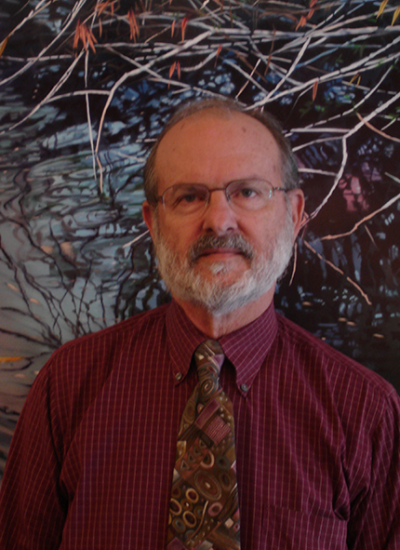FISH, D. G., AMPEL, N. M., GALGIANI, J. N., DOLS, C. L., KELLY, P. C., JOHNSON, C. H., PAPPAGIANIS, D., EDWARDS, J. E., WASSERMAN, R. B., CLARK, R. J., ANTONISKIS, D., LARSEN, R. A., ENGLENDER, S. J., & PETERSEN, E. A. (1990). COCCIDIOIDOMYCOSIS DURING HUMAN-IMMUNODEFICIENCY-VIRUS INFECTION - A REVIEW OF 77 PATIENTS. MEDICINE, 69(6), 384-391.
Nguyen, C., Barker, B. M., Hoover, S., Nix, D. E., Ampel, N. M., Frelinger, J. A., Orbach, M. J., & Galgiani, J. N. (2013). Recent advances in our understanding of the environmental, epidemiological, immunological, and clinical dimensions of coccidioidomycosis. Clinical microbiology reviews, 26(3), 505-25.
Coccidioidomycosis is the endemic mycosis caused by the fungal pathogens Coccidioides immitis and C. posadasii. This review is a summary of the recent advances that have been made in the understanding of this pathogen, including its mycology, genetics, and niche in the environment. Updates on the epidemiology of the organism emphasize that it is a continuing, significant problem in areas of endemicity. For a variety of reasons, the number of reported coccidioidal infections has increased dramatically over the past decade. While continual improvements in the fields of organ transplantation and management of autoimmune disorders and patients with HIV have led to dilemmas with concurrent infection with coccidioidomycosis, they have also led to advances in the understanding of the human immune response to infection. There have been some advances in therapeutics with the increased use of newer azoles. Lastly, there is an overview of the ongoing search for a preventative vaccine.
Ampel, N. M., Dionne, S. O., Giblin, A., Podany, A. B., & Galgiani, J. (2009). Mannose-binding lectin serum levels are low in persons with clinically active coccidioidomycosis. Mycopathologia, 167(4), 173-80.
Mannose-binding lectin (MBL) is a circulating collectin that is part of the innate immune response. We explored the serum levels of MBL in persons with different forms of coccidioidomycosis.
Galgiani, J. N. (2007). Coccidioidomycosis: changing perceptions and creating opportunities for its control. Annals of the New York Academy of Sciences, 1111, 1-18.
The perceptions of coccidioidomycosis as a medical problem has undergone sequential and dramatic metamorphoses since its first description more than a century ago. First thought to be rare and lethal, coccidioidomycosis was subsequently found to be common and often mild. During World War II, its overall impact upon large populations came sharply into focus and the consequences for public health became clearer. Early treatments had significant limitations and toxicities, and therefore treatment of coccidioidomycosis was reserved for only the sickest patients. Since then, safer oral therapies have become commonplace. Despite their availability, there has been no investigation of their use in the less severe and much more common early infections. Even newer drugs such as nikkomycin Z, which might actually cure infections, until very recently have had trouble finding a sponsor to move it through clinical trials. Perceptions once formed by the understanding of coccidioidomycosis as a medical problem now appear to hinder the future study of newer therapeutic opportunities. It is suggested in this review that it is time to revisit and possibly change these perceptions if we are to improve our care of patients.
Narra, H. P., Shubitz, L. F., Mandel, M. A., Trinh, H. T., Griffin, K., Buntzman, A. S., Frelinger, J. A., Galgiani, J. N., & Orbach, M. J. (2016). A Coccidioides posadasii CPS1 Deletion Mutant Is Avirulent and Protects Mice from Lethal Infection. Infection and immunity, 84(10), 3007-16.
The CPS1 gene was identified as a virulence factor in the maize pathogen Cochliobolus heterostrophus Hypothesizing that the homologous gene in Coccidioides posadasii could be important for virulence, we created a Δcps1 deletion mutant which was unable to cause disease in three strains of mice (C57BL/6, BALB/c, or the severely immunodeficient NOD-scid,γc(null) [NSG]). Only a single colony was recovered from 1 of 60 C57BL/6 mice following intranasal infections of up to 4,400 spores. Following administration of very high doses (10,000 to 2.5 × 10(7) spores) to NSG and BALB/c mice, spherules were observed in lung sections at time points from day 3 to day 10 postinfection, but nearly all appeared degraded with infrequent endosporulation. Although the role of CPS1 in virulence is not understood, phenotypic alterations and transcription differences of at least 33 genes in the Δcps1 strain versus C. posadasii is consistent with both metabolic and regulatory functions for the gene. The in vitro phenotype of the Δcps1 strain showed slower growth of mycelia with delayed and lower spore production than C. posadasii, and in vitro spherules were smaller. Vaccination of C57BL/6 or BALB/c mice with live Δcps1 spores either intranasally, intraperitoneally, or subcutaneously resulted in over 95% survival with mean residual lung fungal burdens of 1,000 CFU from an otherwise lethal C. posadasii intranasal infection. Considering its apparently complete attenuation of virulence and the high degree of resistance to C. posadasii infection when used as a vaccine, the Δcps1 strain is a promising vaccine candidate for preventing coccidioidomycosis in humans or other animals.


